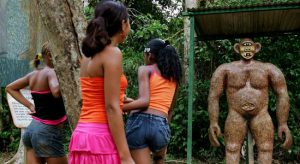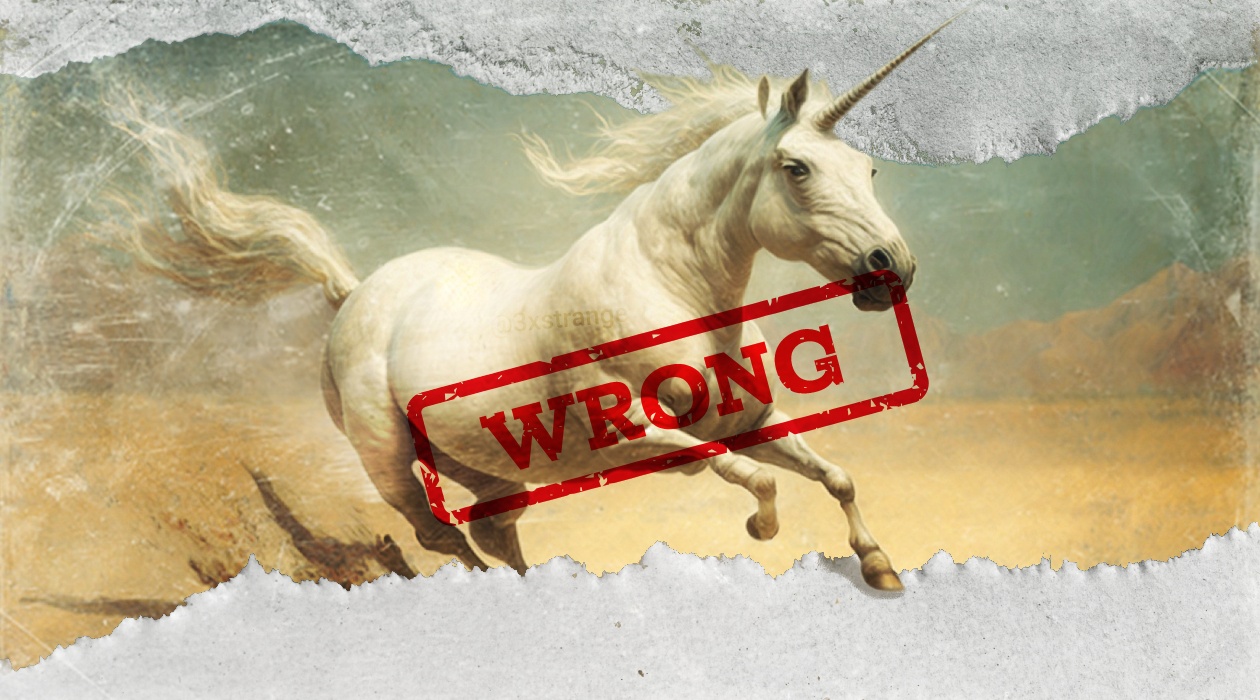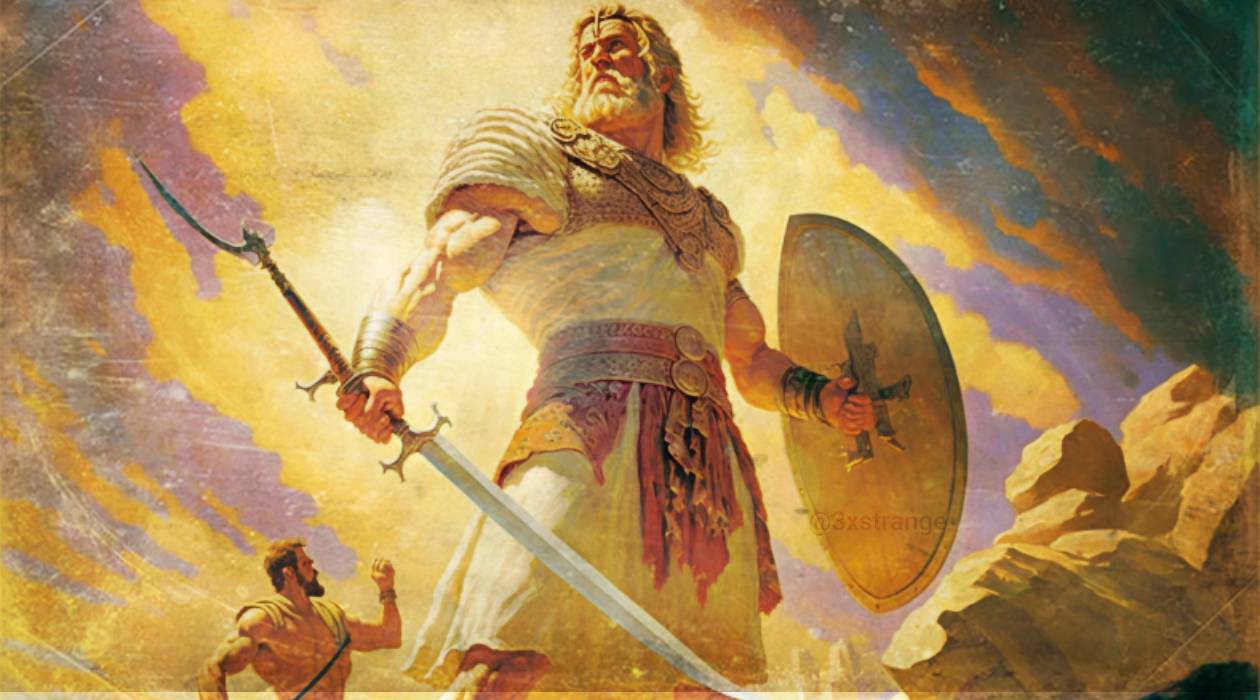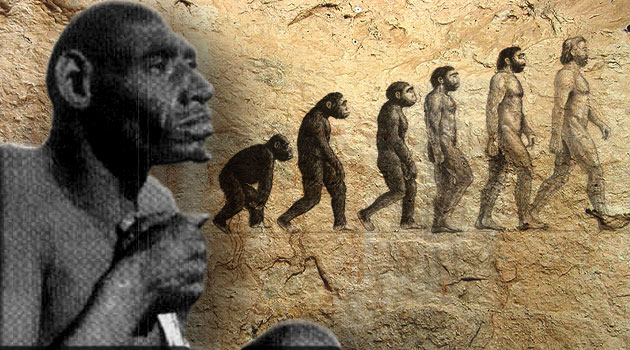Cryptozoology
Mapinguari the Amazon Bigfoot – cursed become the forest protector

With an about 2,900,000 sq mi (7,500,000 km2), or roughly 40 percent of the South American continent of a dense tropical forest, lives a large number of, yet, unknown creature, among those, is the Mapinguari, resembling a monkey, taller than a man, sharp claws with a strong putrid smell.
Amazonia is sparsely populated.
There are scattered settlements inland, but most of the population lives in a few larger cities on the banks of the Amazon and other major rivers, such as in Iquitos, Peru, and Manaus and Belém (Brazil).
More than 1,400 species of mammals are found in the Amazon.
The majority of these animals are species of bats and rodents. Its larger mammals include the jaguar, ocelot, capybara, and tapir.
According to natives, the Mapinguari or mapinguary, also know as Isnashi, Caapora, and Jurupari described as resembling either a large ape or giant sloth and with long arms, powerful, sharp claws, reaching heights of 7-8 feet when standing on two legs and is covered with a thick, smelly matted fur.
The Mapinguari Legend
The origin of the Mapinguari legend is possibly derived from other native amazon histories. The knowledge of the word mapinguari is not known by the first explorers, only when the rubber extractors became cutting the forest and going deep in the region this story has been told.
The knowledge of the word mapinguari is not known by the first explorers, only when the rubber extractors became cutting the forest and going deep in the region this story told.
Some books tell the story of a Manauá Indian cursed by the great snake to become the protector of the forest, transforming him into a monster with an eye on the forehead, a mouth that opens vertical in the belly, and sharp claws.
To overpower enemies a terrible bad smell, what makes no one wants to approach him to end up living alone in the forest.
In another tale, an old shaman or an older age evolves and transform into Mapinguari, cursed and condemned to inhabit the interior of forests with one eye on the forehead, large stature, long hair over the body, and mouth in the navel.
They say he just runs away when he sees a sloth. Strange because from some descriptions considered a prehistoric sloth. Are we talking about two different large creatures?
According to the Indian Parintintin Domingos, the leader of a tribe, it can only be killed with a blow to the head.
But there is a significant risk because the creature has the power to make the victim dizzy and “see the day into night.”
Mapinguari close encounters
Been dismissed by most of the Brazilian population as a folkloric, mythological creature such as Saci-perere (one leg black kid, who has the power to mess with the land in the form of a twister) or the Iara (a cross between a siren and a mermaid), the persistence of recent reports of sights led scientists to organize expeditions to secluded regions of the Amazon.
In 1937 report from central Brazil claimed a Mapinguari had gone on a three-week rampage, killing over 100 cows and ripping out the tongues from their carcasses.
Thirty years later, hunters in the Badajós Lake, attacked by a creature that they believed to be from the female spice, it had breast similar to a woman but covered by fur.
They shot at the animal as defense, and it screamed high roars that attracted the attention of a possible male.
This other creature was taller, approximately 7 feet tall (2.5m), solid dark fur, resembling a Sasquatch or Yeti, and it came in defense of the female, attacking the hunters who fled in a canoe.
The Mapinguari did not continue the chase turning his attention to helping the wounded female, and both walked away back to the jungle.
In 1995, Joao Batista Azevedo was working by the river when I heard a scream, a horrible scream, suddenly coming from the jungle, something looking like a man, all covered in hair and walking on two legs.
With a 45-days canoe ride from the nearest village, the, now seventy years old, felt great relief when the creature decided not to change them.
About 2010, Geovaldo Karitiana, a member of the Karitiana tribe, while hunting in the jungle near an area that his tribe calls “the cave of the Mapinguari.” He tells the Mapinguari was coming in the direction of the village and was making a big noise.
Close to the witness, it stopped and that when a decaying smell made him dizzy and nauseous and he fainted; when Geovaldo woke up, the Mapinguari was gone.
He calls his father to see the site of the encounter; Lucas Karitiana attested he saw a cleared pathway where the creature had departed, “as if a boulder had rolled through and knocked down all the trees and vines.”
Separating the Mapinguari Folklore from Science
Many cryptozoologists intrigued by reports of this creature, though some have dismissed it as a folkloric/mythological creature, or a long-preserved folk memory of the giant animals that existed in South America in the Pleistocene, possible a giant primate and a giant ground sloth, most likely Megatherium and Mylodon.
The giant ground-sloth theory can explain its supposed bulletproof hide, as preserved ancient skin samples in the late 19th century revealed hard dermal ossicles, small pieces of bone in the skin of dinosaurs and alligators that protected them from predators.
It is possible that such skin would have been impervious to arrows and bullets. Even the scientist is believing this animal is extinct for 13,000 years.
The giant ground sloth, Megatherium, was once one of the largest mammals to walk the earth, more prominent than a modern elephant.
Despite several efforts, searches for verifiable physical evidence have been futile, as the only evidence for the existence of the mapinguari is the description of witness thru the years.
The Amazon is a large area, over ten species of monkeys discovered in the Amazon, and only in 2013, a tribe that never had contact with the civilization located in southeast Amazon, pretty close to civilization, comparing with the extension of the region.
Reality TV Shows in search of the Mapinguari
Joshua Gates, an American television presenter, television producer, and author, and his team, in 2008, experienced unexplained loud crashing noises in the Amazon rainforest while attempting to find and film the mapinguari on the episode of “Destination Truth” entitled “Flying Dinosaur & Sloth Monster.”
National Geographic Channel featured a search for mapinguari on the episode of the “Beast Hunter” entitled “Nightmare of the Amazon.”
Also, the Animal Planet Channel show “Finding Bigfoot” was looking for the allusive beast in his fifth season premiere in 2015.
Archeology
What you know about the Unicorn is Wrong
What you know about the Unicorn may need to be corrected. What if I tell you Unicorn is or was a real animal as described in the Bible?

What you know about the Unicorn may need to be corrected. What if I tell you Unicorn is or was a real animal as described in the Bible?
Like many other world religions and mythologies, the Bible contains stories of extraordinary creatures.
In the Old Testament, we find mentions of beings such as Unicorns, the Behemoth, the Leviathan, the Nephilim, and Giants.
These creatures have captured people’s imaginations for centuries, and their potential origins are as unbelievable as their descriptions.

One of the creatures found in the Old Testament is the Unicorn.
What really is a Unicorn?
Surprisingly, it is mentioned quite a few times in the Bible.
In the Book of Numbers, the Bible describes God as a unicorn, stating:
“God brought them out of Egypt; he hath as it were the strength of an unicorn.”
– Numbers 23:22
“God brought him forth out of Egypt; he hath as it were the strength of an unicorn: he shall eat up the nations his enemies, and shall break their bones, and pierce them through with his arrows.”
– Numbers 24:8
The Deuteronomy:
“His glory is like the firstling of his bullock, and his horns are like the horns of unicorns: with them he shall push the people together to the ends of the earth: and they are the ten thousands of Ephraim, and they are the thousands of Manasseh.”
– Deuteronomy 33:17
In the Book of Job, God rhetorically asks
“Will the unicorn be willing to serve thee, or abide by thy crib? Canst thou bind the unicorn with his band in the furrow? or will he harrow the valleys after thee?”
– Job 39:9-10
In Psalm:
“Save me from the lion’s mouth: for thou hast heard me from the horns of the unicorns.”
– Psalm 22:21
“He maketh them also to skip like a calf; Lebanon and Sirion like a young unicorn.”
– Psalm 29:6
“But my horn shalt thou exalt like the horn of an unicorn: I shall be anointed with fresh oil.”
– Psalm 92:10
However, in the original Hebrew Bible, the creature is not called a unicorn but “Re-em.”
But what is a Re-em?
When the Greeks began translating the Bible, they translated the Hebrew word “Re-em” to “Monokeros,” Mono (single) Keros (Horn), which means one horn.
Similarly, the Latin speakers translated the word “Unicornis,” from which we get our word unicorn.
However, the Greeks and Romans did not feature unicorns in their mythologies.
Instead, they are featured in ancient Greco-Roman natural encyclopedias.
These ancient nature textbooks did not think unicorns were mythical beasts but real-life creatures as natural as a cow, lion, or horse.
Some scholars believe it is a case of mistaken identity, and the one-horned creature is a Rhino.

When early travelers went to faraway lands, they spoke of strange creatures they saw on their way.
For example, the Roman naturalist Pliny the Elder describes a creature as fierce animal called the Unicorn, which is the head of a stag, the feet of an elephant, and the tail of a bull, while the rest of the body is like a horse.
Scholars believe Pliny offers an imperfect and simplistic description of a rhino.
He likely heard a second or third-hand description of one and is recounting it in his book.
The definition of the unknown creature became distorted, with each telling a bit like a game of telephone.
Another possibility for the Unicorn’s identity?
The original description of a rhino may have been distorted when it first got translated.
Another explanation for the unicorn’s identity is that the Hebrew word for the unicorn, “Re-em,” actually means a creature similar to the “Rimu” animal that the nearby Acadians called the “Aurochs,” an ancient ancestor of modern-day Cattle.
Therefore, when the Bible talks about unicorns, it may refer to an ancient Bull type.

If initially, the Bible described the Unicorn as a Bull or a Rhino, I’ll let you decide.
More information about the 1998 Capão Redondo UAP Incident
Archeology
What No One Tells You About Nephilim and Giants?

Is this a legend or a truth? Giants, the Nephilim once trod the earth’s surface, did they not? Can archaeology find the solution to this statement made for TV Shows and Scientists?
Genesis 6:4 in the Book of Genesis makes a very bizarre diversion from the tale of how man came to be.
It reveals:
“There were giants in the earth in those days; and also, after that, when the sons of God came in unto the daughters of men, and they bear children to them, the same became mighty men which were of old, men of renown.”
King James Version (KJV).
The Guinness Book of World Records lists hundreds of men and women who have grown to heights of 8 feet or higher. Enormous individuals have always existed.
The most well-known giant in the Bible is a huge strong person named Goliath.
How tall was Goliath?
 Everyone is familiar with the David and Goliath tale.
Everyone is familiar with the David and Goliath tale.
David uses a sling to launch a stone. Goliath suffers a brain injury. Before you know it, David has chopped off the head of Goliath and will soon become king.
Did a giant Goliath exist?
But how tall were the others, like David, in comparison to Goliath? Weren’t they all short?
During the iron period, a person would have been roughly a meter sixty tall.
Goliath is described in the Bible as being three meters tall and something else.
This exceeds the NBA scale in size. It’s roughly nine feet tall.
The narrative of Goliath is not only told in the Bible. The Goliath story is also told in the Dead Sea Scrolls, which were found in a desert cave in 1947.
The scrolls give Goliath’s height as being two full cubits shorter than the Bible’s measurement of six cubits and a span.
Goliath is described as standing four cubits tall in the narrative of Samuel found in the Dead Sea Scrolls. Goliath is roughly two meters tall, or 6′ 7″ or something, which is considerably closer to regular stature.
Even by modern standards, he was tall, but not absurdly so.
Most experts concur that the two distinct heights are the result of scribal mistakes because the
Dead Sea Scrolls are the earliest copies of the Biblical scriptures.
Academics generally accept the Dead Sea Scrolls’ measurements.
Gath was the hometown of the Philistine warrior, as stated in the biblical writings.
Giant-sized bones were never discovered in Gath by archaeologists. And we won’t be able to know for sure without them. How large actually was Goliath?
What does the Bible mean by giants in the Holy Land?

The Bible Specify yet another behemoth, even greater than Goliath.
The narrative of the second giant in the Bible is told in Deuteronomy 3:11 when he ruled his own biblical Kingdom.
Og, the Vashon king, engaged in combat with the Israelites in the Battle for the Holy Land but came up short.
According to the Bible, Og was the last survivor of a group of giants known as the Rephaim, and he slept in a bed that was 13 feet long by 6 feet wide.
There has never been a Middle Eastern skeleton discovered that was taller than 1.93 meters or 6 feet 4 inches.
Has a mistake been made?
The word “giant” does not appear in the Book of Genesis in the Genesis giants reference in the ancient Hebrew Bible.
Another word is employed, and that word has absolutely nothing to do with enormous.
A Case of miscommunication
Nephilim is the word that is used.
The Nephilim were supposedly the enormous offspring of fallen angels having sex with human women, according to Jewish and Christian legend.
The word “Nephilim” does not even translate as “large” or “giant” in Hebrew. Nephilim literally translates to “The Fallen Ones” in English.
Instead of adhering to the original nephilim, the Greeks who translated the Bible were inspired by their myth about a massive race of titans. The exact Greek equivalent would be “peptokotes.”
Additionally, the term “nephilim” had entirely been replaced with the term “giants” by the time the King James Version was composed in the 1600s.
What about these Nephilim, though?
Hebrew term for “nefal” This is slang for “fallen,” “lower down,” or “subpar.”
According to the Bible, some beings were entirely human in appearance and intelligence at the time of Adam, but they were not actual humans.
The Nephilim that are referenced in chapter six is referring to another life form that coexisted with early humans if chapter six of Genesis is actually recounting early human history.
The passage reads as follows when properly translated:
“There were Nephilim in those days; and also, after that, when the sons of God went to the daughters of men and had children by them.”
– Hebrew Bible.
Starting to become evident from the verse is that whoever these nephilim were, they were some sort of hybrid offspring, the offspring of both “the sons of god” and “the daughters of men.”
Then again, who were these divine sons?
So far, according to the fossil record, two more hominids coexisted with Homo Sapiens, the Neanderthals and the Denisovans.
Neanderthals and contemporary humans already have very large skulls, so Denisovans have the widest skulls ever known. In addition to larger teeth and longer dental arches than humans.

Denisovans weren’t giants, but they were likely strong and stocky.
Denisovans are supposed to just be normal-sized men, between 5 and 6 feet, covered in black fur, and immensely strong.
Oceania had populations that had the highest percentage of ancient DNA, 2 percent Neanderthal and 5 percent Denisovan, according to a study from David Reich (HMS).
Could the Nephilim be the offspring of Neanderthals and humans?
Archaeologists in northern Israel have discovered an area where Neanderthals and humans coexisted.
The Neanderthals originated in Europe, whereas early humans known as homo sapiens originated in Africa and traveled north.
The two eventually collided at the Carmel Mountain Range some 60,000 years ago.
Archaeologists discovered evidence that the two societies may have coexisted in one of the caverns. Where they discovered human and neanderthal remains in the same stratigraphic strata.
That is how we can be certain they inhabited the same cave throughout the same period.
They had a similar culture since they engaged in similar activities and manner of life.
The food they were eating was the same, and they both buried their loved ones in the same manner.
Archaeology, however, cannot establish their mating.

But a complete skeleton was found, which some experts believe to be a Neanderthal and others believe to be a Homo sapiens.
And yet another portion refers to him differently.
These bones could provide the answer to a biblical puzzle if they are the remains of some sort of hybrid hominid.
After their famous encounter at Mount Carmel, the Neanderthals and Homo sapiens may have been content for a while, but their partnership ended about thirty thousand years later.
The earth was populated by Homo sapiens, and Neanderthals went extinct.
Now that we know it was a mistranslation, we may understand why the Bible references a race of giants.
The King James Version interprets the phrase as “giants,” as opposed to the Jewish Publication Society version, which simply transliterates the Hebrew nephilim as “Nephilim.”
It was a race of nephilim, not a race of giants.
More information about What No One Tells You About Nephilim and Giants?
Cryptozoology
Was Azzo Bassou the Missing Link?

 For years scientists searched for the missing link in human evolution, the “link” between humans and their apelike ancestors, according to evolution believers.
For years scientists searched for the missing link in human evolution, the “link” between humans and their apelike ancestors, according to evolution believers.
Sightings of different types of humanoids received different names and suggestion that they could be the missing link.
However, a physical evidence to corroborate, the theory was never presented.
Names like Bigfoot, Yeti, Sasquatch, Orang Pendek, Mapinguari, among others are given in this sights.
But Azzo Bassou was different, he was discovered in 1931 by the local press in Marrakech in Morocco.
They called him “possibly The Last Living Neanderthal”
Azzo Bassou lived in the valley of Dades, near the town of Skoura.
To city locals, Azzo was not a stranger.
Those who knew him described him with a low intellectual capacity man in primitive ways, since he lived in a cave and only ate raw meat.
His forehead was sunken, had a prominent jaw, a large nose and long arms that reached almost to his knees.
He used to walk naked (they dressed him in a sack, just to take the photographs) and used very rudimentary tools.
Besides being able to articulate some words, many of them were unintelligible.
His name “Azzo Bassou” means more or less “beast-man” in Arabic.
By 1956, French writer Jean Boullet accompanied by the ethnologist Marcel Homet arrived in town interested to know and study the case.
The sensationalist press took advantage from the material and announced Azzo Bassou as being “the missing link”, displaying his image as the last Neanderthal alive. His physical appearance, tall, thin and the apparent lack of hair, as you can see in the pictures, do not look like the typical robust Neanderthal shown in the science book.
Did They Believe That Azzo Bassou Was the Missing Link?
 An Italian expedition sought for evidence to prove that Azzo was the missing link.
An Italian expedition sought for evidence to prove that Azzo was the missing link.
The village leader, Sidi Fillah, informed them that Azzo died and was buried in his oasis.
According to villagers, Azzo reached 60-years-old when he passed away.
However, the same expedition located two alleged sisters or relatives of Azzo, called Hisa and Herkaia.
Both of them performed heavy work with unusual ease.
Although both physically resembled Azzo, it was not possible to determine if they were really related.
The expedition concluded that Azzo might not be the only one. But rather could be more like him around the area.
Azzo Bassou was not the missing link.
Today it is known that the Azzo Bassou’s physical description are clear evidence of microcephaly, a disease that causes the head to be smaller than normal.
Also well known at the time, the physical abilities, uncommon in these cases, presented by Azzo created a large debate between microcephaly or the missing link discovery.
But Azzo Bassou and his relatives would not be the only ones. Three brothers in India presented similarities, but not much is known about them.
Causes of microcephaly include infections, malnutrition, or exposure to toxins.
Symptoms vary and include intellectual disability and speech delay.
In severe cases, there may be seizures and abnormal muscle functionality.

Microcephaly measuring
Reources
-

 Paranormal8 years ago
Paranormal8 years ago1954 Greada Treaty – President Eisenhower form a treaty with aliens at Holloman AFB
-
Ghost14 years ago
Whatching ‘Phoonk 2′ can fetch you U$10,000
-

 Archeology11 months ago
Archeology11 months agoThe Anunnaki: Ancient Aliens in the Bible?
-

 UFO1 year ago
UFO1 year agoThe 1966 Tully Saucer Nest
-

 Paranormal8 years ago
Paranormal8 years agoDid the Red Baron shoot down an UFO during WWI?
-

 Cryptozoology7 years ago
Cryptozoology7 years agoWas Azzo Bassou the Missing Link?
-

 True Crimes6 years ago
True Crimes6 years agoChristmas Massacre – The real story of Bloody Bob Sims
-

 Archeology1 year ago
Archeology1 year agoWhat you know about the Unicorn is Wrong
-

 Debunk7 years ago
Debunk7 years agoThe Philip Experiment – The Strange Story Behind the Movie The Quiet Ones
-

 UFO7 years ago
UFO7 years agoUnderstand The Truth About Phil Schneider and The Dulce Base
-

 UFO3 years ago
UFO3 years agoThe Ubatuba Incident – A UFO Exploded in 1957 with Fragments?
-

 UFO3 years ago
UFO3 years agoThe Bauru Incident – Daildo de Oliveira Wrestling with Invaders
-

 UFO3 years ago
UFO3 years agoThe Turíbio Pereira Incident – Another Closed Encounter in Lins
-

 True Crimes6 years ago
True Crimes6 years agoWhat You Should Know About Elisa Lam Will Scare You
-

 UFO6 years ago
UFO6 years agoThe Guyancourt UFO Incident – When Two UFOs Landed for Repair
-

 Paranormal8 years ago
Paranormal8 years agoWhen UFO Attacks – The Facchini Incident
-

 UFO4 years ago
UFO4 years agoUFOs in Amazon – When Mythology may be the Answer
-
Debunk8 years ago
Are Minions inspired by Nazi experiments with children?
-

 UFO3 years ago
UFO3 years agoAlien Abduction in 1956 Niterói
-

 UFO6 years ago
UFO6 years agoThe day a flying saucer landed in the Hollywood Hills.





You must be logged in to post a comment Login